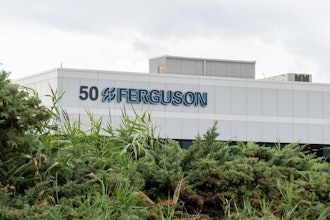Here at Industrial Distribution, we had planned to run Jim Tompkin's insightful article today regarding Amazon and the impact that a change in price for their Prime Shipping would have on supply chains. Well, Amazon jumped the gun and announced a $20 increase in Prime membership last week: a boost for the first time in almost a decade — from $79 to $99. We still think the article is relevant and timely, especially since the "prediction" has already come true. The implications of this loyalty programs and its effects on consumer behavior are just as important to note today as they were last week.
A note from Jim Tompkins: While I certainly missed the mark on my predictions, it’s still true that Amazon loves misdirection and strong publicity. And we were all part of their big successful media campaign to promote Prime and get customers talking. This just proves that you can’t always ‘engineer’ Jeff Bezos!
What do Amazon Prime prices, brilliant publicity campaigns, and supply chains have in common? More than you would imagine.
First, let’s take a little tour of some very recent history. At a January 30, 2014 conference call with investors, Amazon’s CFO Tom Szkutak mentioned that Amazon was “considering” a price increase for Amazon Prime. The pursuing discussion included that the price of Prime had not gone up in 9 years despite these factors:
- Rising fuel costs.
- Rising shipping costs.
- Items covered by free two-day shipping have increased from 1 million to 19 million.
- Amazon Prime now includes the Amazon Prime Instant Video and the Kindle Owners’ Lending Library.
Cue the media buzz. By the following Tuesday (February 4), articles, blogs and social media were hot with the potential of an Amazon Prime price increase. A new poll by the Wall Street Journal suggested that 47% of Prime members might quit the program if the price went up by $30/year. Some folks thought the price increase would not be a big deal, but others reacted with statements such as:
- “Well … this member will be a non-member when that happens.”
- “Amazon just got Netflixed.”
- “Never fails…gouge the customers at every turn.”
- “Barely worth the price now.”
By February 21, there was another flurry of articles on this subject when Amazon bundled their Prime package (expedited free shipping and access to the Kindle Owners’ Lending Library) with the previously separate Amazon LOVEFiLM streaming video content. While it is true that in the UK Amazon Prime increased approximately $50 and in Germany increased approximately $37, the users in Germany will save 56% and 35% in the UK for what were previously separate services. So, in some ways this “price increase” is actually a reduction in price for the bundled service.
Then late on Friday, March 7, a blog on Barron’s by Teresa Rivas indicated that the level of member losses had been inflated. The Barron’s blog reported that based on price increases at Netflix and Redbook, a more reasonable estimate of member drops was probably 5% to 15%.
This “increase of prices for Amazon Prime” issue has really created a flurry of communications. The question you may be asking is: “Why do we need Jim Tompkins to enter this fray?” Or more specifically as a person who closely analyzes Amazon:
A. What does Jim Tompkins think is going on with increasing price of Amazon Prime?
B. What are the supply chain implications of this whole discussion?
Read on and I will answer these two questions.
What does Jim Tompkins think is going on with increasing the price of Amazon Prime?
There are several possibilities for what Amazon was trying to accomplish with the January 30 conference call when their CFO indicated they may increase the cost of Amazon Prime subscriptions:
- Amazon wanted to distract the media away from the company’s lower than expected fourth quarter earnings.
- Amazon wanted to highlight what a great deal Amazon Prime is for their customers and to obtain some free publicity about not raising prices over 9 years.
- Amazon built a foundation for bundling LOVEFiLM and Amazon Prime in the UK and Germany.
- Amazon is really thinking about increasing the cost of Amazon Prime in the US.
My view is that the Amazon campaign consisted of items 1, 2, and 3 above. I believe that Amazon will not increase the cost of Amazon Prime in the US anytime soon and that they are not even seriously considering increasing fees.
I use the word Amazon “campaign” as I believe they are the best in the world in using the press for their benefit. Just as Jeff Bezos created a lot of excitement on 60 Minutes on the eve of Cyber Monday, I contend that Amazon used the press to distract attention away from their fourth quarter results, to promote Amazon Prime in the US, and to lay the groundwork for an increase in the cost of Amazon Prime in the UK and Germany.
Why do I think this? Consider these key points.
- Amazon has traditionally called Amazon Prime a “Shipping Program”. It is not a shipping program – it is a “Loyalty Program” and one of the strongest of its kind in the world. The loyalty program is so good that the average Amazon Prime customer buys double ($1,200/year) of what the average non-Amazon Prime customer buys ($600/year).
- Amazon Prime has an estimated 20 million subscribers in the US (my estimate, because we do not know for certain). In year 2013, Amazon’s shipping revenue (Prime subscription plus shipping fees) was around $3.2 billion. Their shipping costs were $6.6 billion. This $3.4 billion shipping shortfall is 4.7% of gross sales. Amazon averages around 27% margin.
- So, given my estimates, an Amazon Prime fees increase of $30 that resulted in:
- A 5% drop rate in members would result in a net increase in profits of $170 million/year in the US.
- A 10% drop rate in members would result in a net decrease in profits of $260 million/year in the US.
- A breakeven in profits if the drop rate were 7%.
- Amazon is not focused on short-term profit, but rather on being super customer centric. Therefore, to increase the fee of Amazon Prime in the US is not something that I think Jeff Bezos would do given the small potential gain vs. the anti-customer centric blemish that would occur if they did increase the Amazon Prime subscription fee.
The Short Answer: Amazon is not seriously considering increasing the price of Amazon Prime in the US, but rather, the company is using their “consideration” of such an increase to achieve their campaign objectives.
What are the supply chain implications of this whole discussion?
The Short Answer: I believe there are three major supply chain capabilities that are brought about through Amazon Prime.
- Amazon Prime is about speed of delivery.
- Amazon Prime is about being customer centric.
- Amazon Prime is about being local.
All retailers need to grasp these three critical capabilities and build their supply chains around them. Amazon is building and continuously improving the world’s quickest, customer-centric supply chain with new local delivery capabilities that will compete with most, if not all, supply chains.
Jim Tompkins, founder and CEO of Tompkins International, is an expert on supply chains and operations strategy, as well as the significant changes occurring today in B2C and B2B. He has extensively researched Amazon, Walmart and other retail titans and understands the implications that these retail leaders have on the future of supply chains, logistics and delivery models and how they are disrupting business as usual. His expertise—combined with targeted analysis of the market, omnichannel and e-commerce—make him one of the world’s foremost authorities on how companies can compete and succeed in today’s burgeoning market.


















